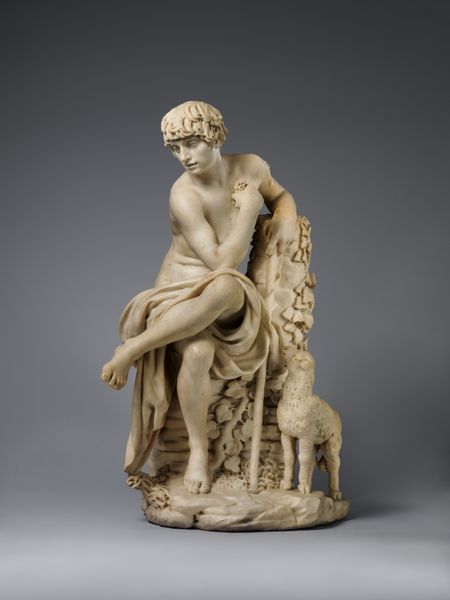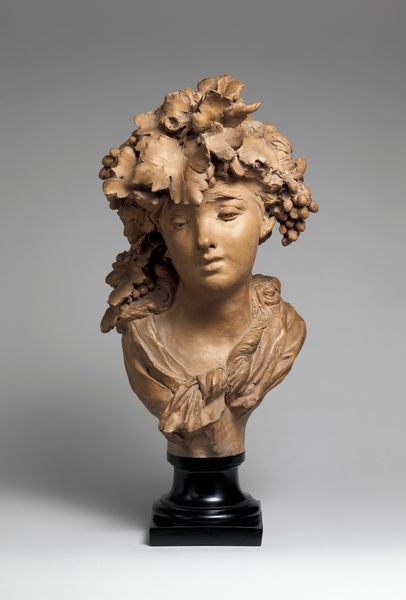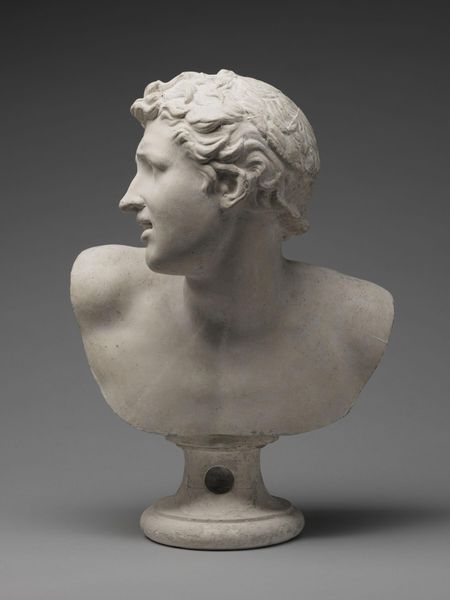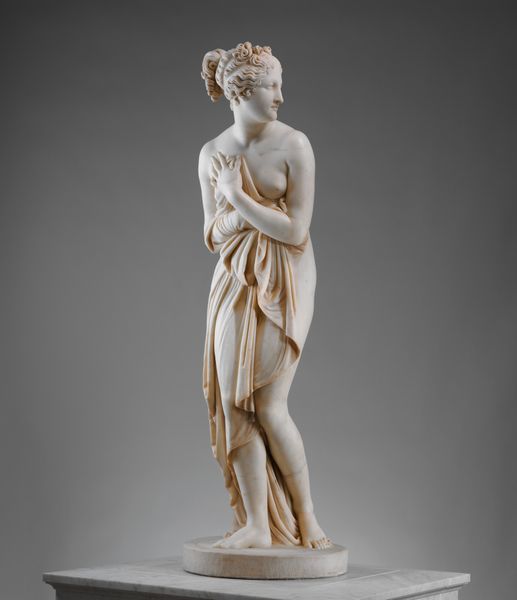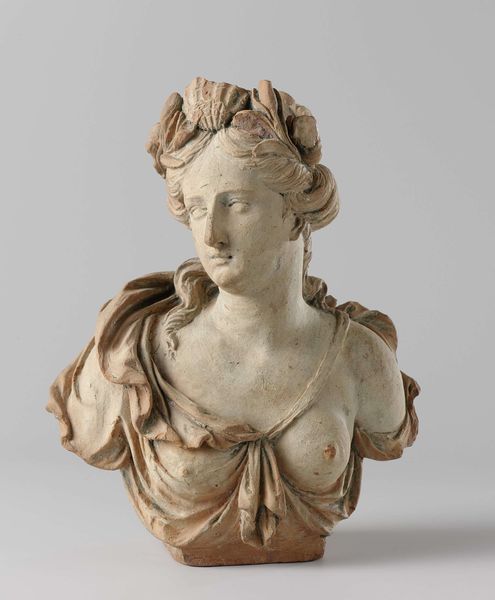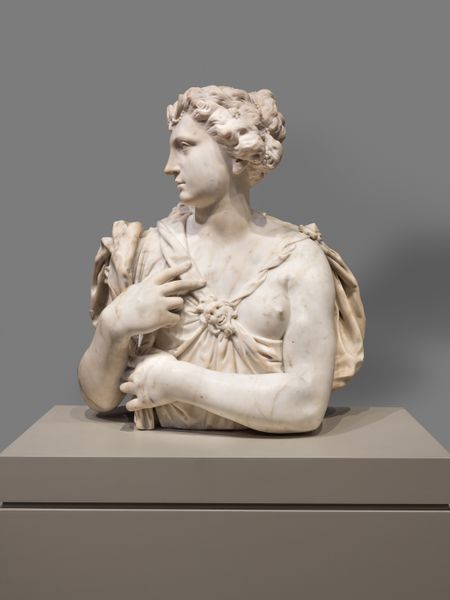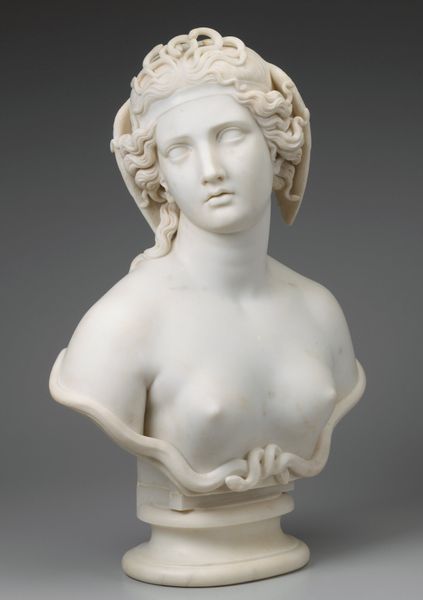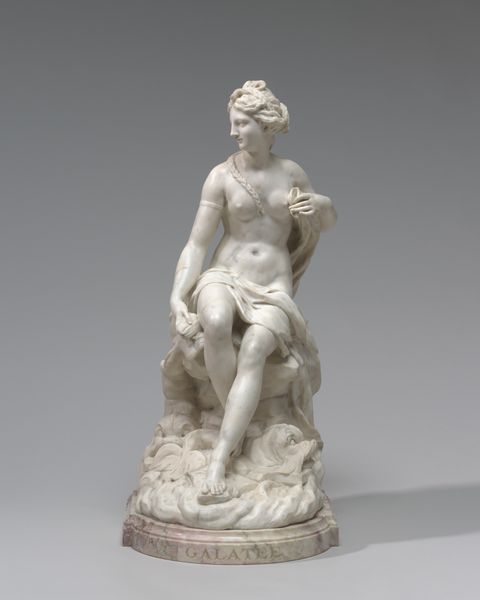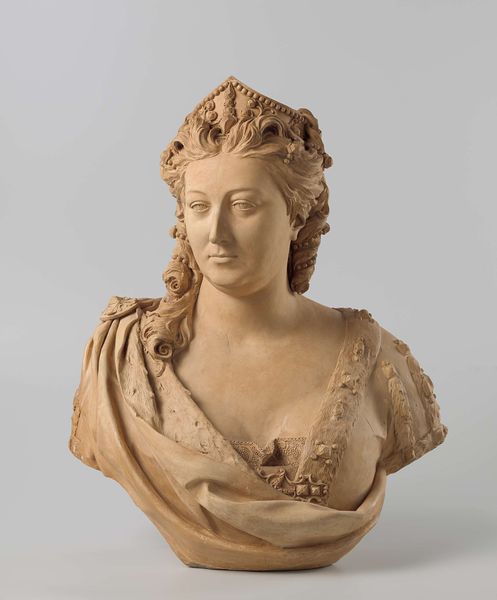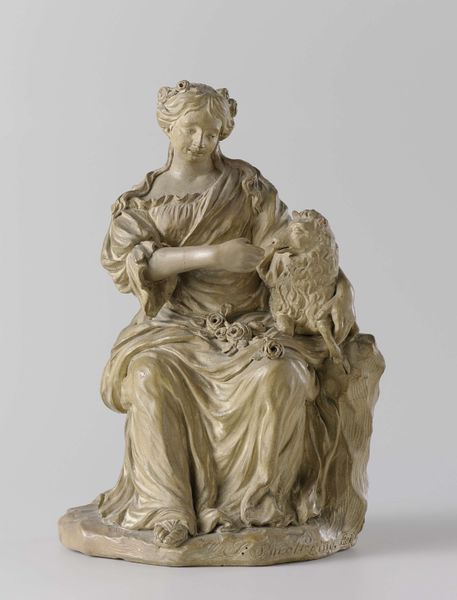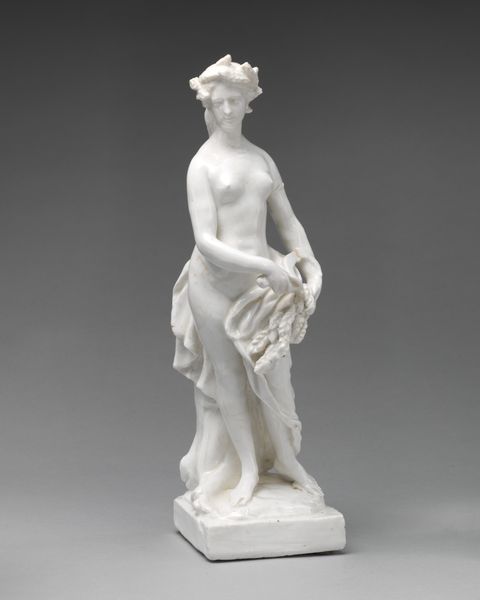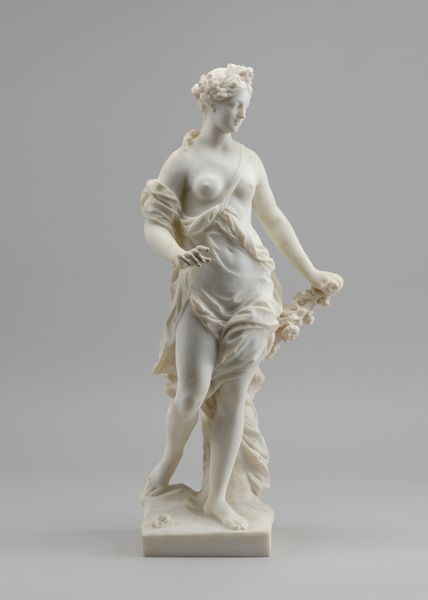
Dimensions: weight confirmed: 34 in., 60.4 lb. (86.4 cm, 27.4 kg)
Copyright: Public Domain
Curator: Here we have George Frederic Watts' marble bust, Clytie, a sculpture created between 1863 and 1875. Editor: My initial reaction is one of somber reflection; the smooth, almost mournful cast of the marble, along with her averted gaze, suggests a story of longing or unrequited love. Curator: Indeed. Watts was fascinated by classical mythology, and Clytie tells the tragic tale of a nymph who loved the sun god Apollo. Her unrequited passion drove her to madness, ultimately transforming her into a sunflower, forever gazing at the sun. The choice to portray her in marble taps into the Neoclassical fascination with ancient Greece. Editor: The social context surrounding depictions of women during that time is hard to ignore, though. Victorian society often confined women to roles of idealized beauty or tragic victimhood, so this work is definitely embedded in those notions of femininity. The partial nudity, while classical, can also be viewed as part of that objectification. Curator: While I agree that representations of women were highly controlled and gendered in Victorian culture, Watts often explored themes of intense emotion and spiritual yearning, imbuing his figures with psychological depth. One should notice, the swirling leaves around the bust don’t simply decorate; they hint at Clytie's transformation and connect her intimately to nature. Editor: True, that connection is poignant. Still, it's also essential to ask: how does this representation perpetuate a narrative where a woman's identity is defined by her (doomed) relationship to a male figure? Curator: A valid point. Museums, in turn, have the responsibility to facilitate conversations like these about historic works so that they prompt critical engagement, rather than passive consumption. Editor: Absolutely. And looking at “Clytie” with those critical questions makes this encounter so much more relevant today. I leave this spot more thoughtful. Curator: Agreed. By examining the work of the past through the lens of contemporary concerns, we can better understand not only art, but ourselves.
Comments
No comments
Be the first to comment and join the conversation on the ultimate creative platform.
